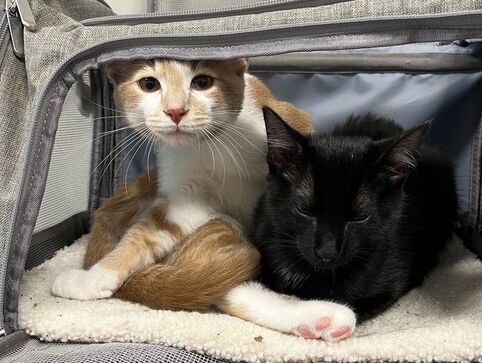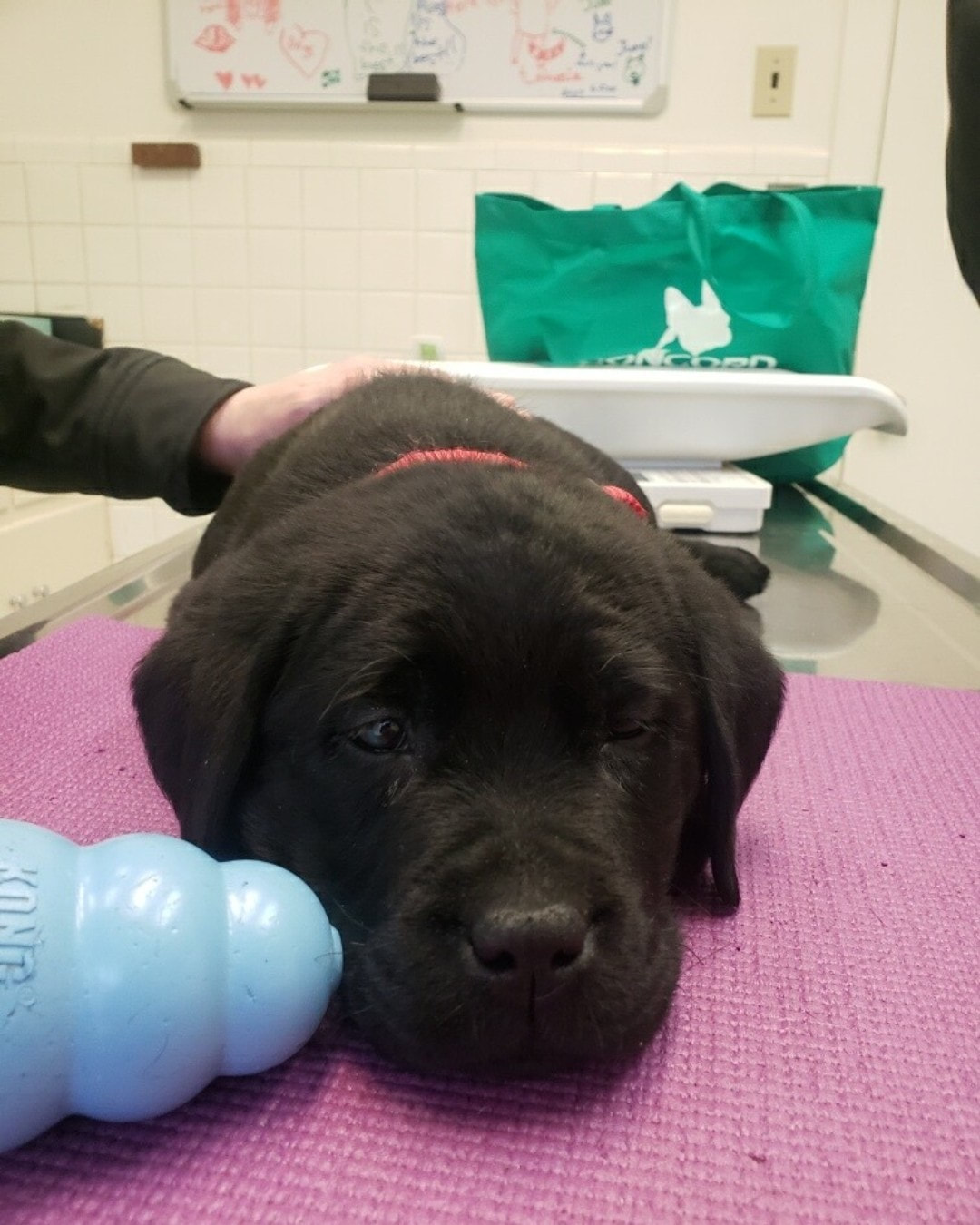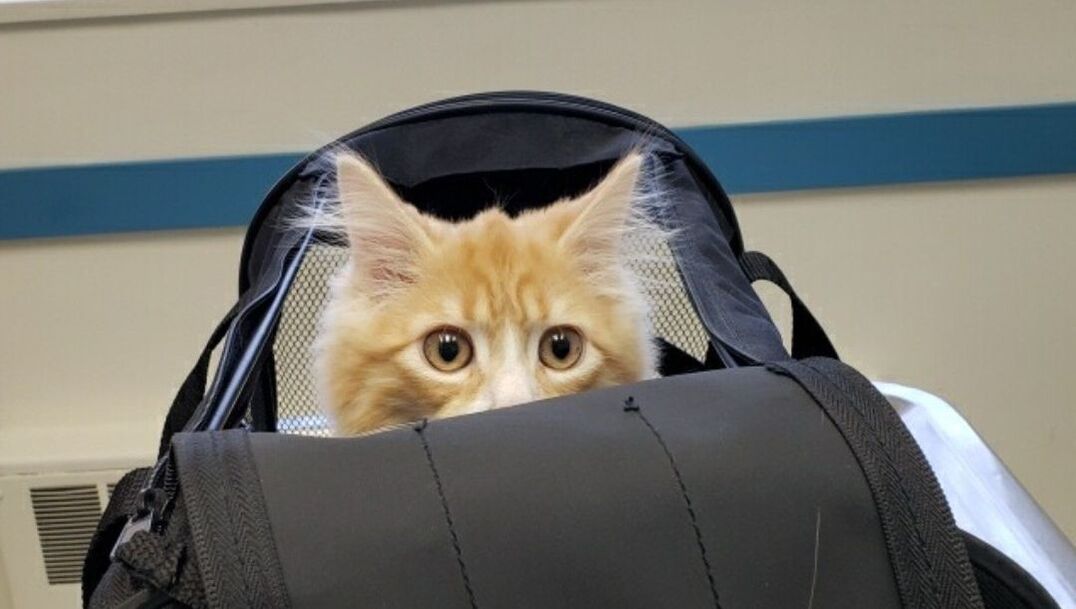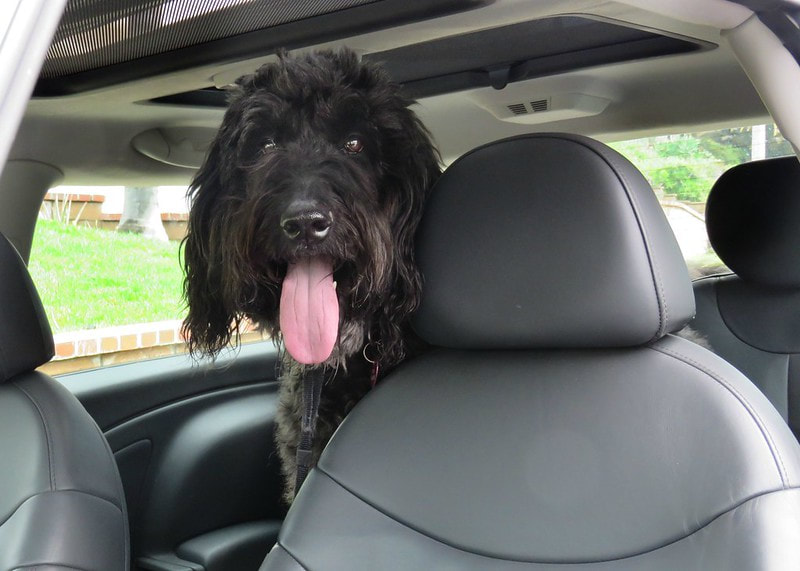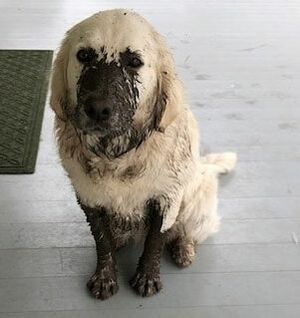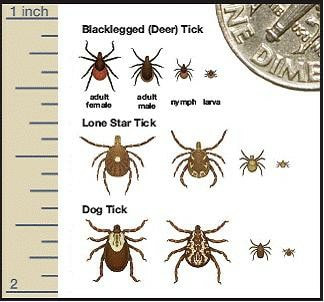 If the chilly weather, lawn decorations, and music at every grocery store haven’t already tipped you off, the holidays are growing near! While you’re racing around to find gifts for your family and friends and neighbors and your mail carrier’s nephew’s fiance, there’s a special someone who might slip your list entirely. If you couldn’t guess from the fact that we’re an animal hospital, we’re talking about your pet! Whether your pet will be eating tinsel off the tree or knocking over your menorah, they deserve a shiny new toy, too. But with so many goodies and pet products on the market, it can be hard to separate the cool from the coal. That’s why we’ve put together this handy holiday gift guide, to help you shop for the picky pups and the finicky felines in your life. While we won’t be endorsing specific brands or products, we’ll take a look at categories of products to help you figure out what’s worth looking into, and what’s just a bunch of Holiday ho-hum.  Chew Toys: As the old saying goes, every dog toy is a chew toy. Considering your pup will have their fun chewing on just about anything you give them, it’s important to make sure their toys won’t be harmful to their pearly whites. Our good friends at Veterinary Dental Services in Boxborough put together this handy dandy guide to help you determine what’s suitable for your pet’s teeth, and what’s a periodontal no-go. As a general rule of thumb (in this case literally!), anything that can’t be indented with your fingernail runs the risk of breaking teeth. So this year ditch the tennis balls and bones, and stuff your stockings with pig ears instead. They’re great for your dog, and kids love them too! Feeders, Fountains, and Bowls: It’s easy to take food and water bowls for granted, even though our pets use them every single day! While there’s nothing wrong with the tried and true dog dish, there are a handful of fancier products that might be worth your investment. Puzzle feeders and slow feeder dog bowls can turn dinner into a fun game that scratches that hunter instinct, and can also help out with those over-eager pups who eat so fast they make themselves sick. It’s a gift for you, too! Cats are also notoriously bad at drinking water, which is why we typically recommend feeding wet food. But in addition to a good moist meal, some people also find that their cats respond better to a water fountain than a still bowl. Cats are inclined to think standing water is unsafe (if only puddle-drinking dogs had that instinct), so they may be more drawn to a fountain that mimics running water instead. If you struggle to get your cat to drink enough, a fountain could be the secret to a healthy, hydrated holiday.  Treats and Snacks: Candy is a great stocking stuffer for our human friends, so maybe you want to share that love with your pets as well! But with so many options available, and with all the recent news on pet obesity rates, it can be hard to figure out what makes for a suitable snack. As a general rule treats should make up no more than 10% of your dog’s diet, though that still leaves a lot of room for variance- a treat that’s 2% of a Leonberger’s daily caloric intake might be 20% of a Yorkie’s! One way to help manage this is to skip the store bought treats all together, and to use lower calorie, homemade alternatives like carrots, apples, and unbuttered popcorn. If you do want to go the store bought route, pay extra attention to fat content and overall calorie count, and look for treats that contain single-source ingredients as opposed to preservatives and artificial flavorings. Supplements: Pet stores are flooded with supplements these days, with many making bold claims about curing this problem or that ailment. Considering the lack of regulation around veterinary nutraceuticals it’s good to turn a skeptical eye to these sorts of products, and it’s safe to say that a good number of supplements don’t live up to their own hype. But that does beg the question, are any of these supplements worth your money? While supplements should always be used in accordance with your veterinarian’s advice, and while they can’t treat every problem, there are particular issues where they’re worthy of consideration. Anxiety is often a complex issue that requires a combination of training and medication, but certain supplements containing ingredients such as L-theanine, L-tryptophan, magnolias officinalis, and phellodendron amurense have been shown to help with some types of anxiety. Joint pain and osteoarthritis are also issues that can require a multi-pronged approach for long term management, but supplements containing glucosamine or omega-3s can be a component in these plans. And for those dogs who have chronic gastrointestinal issues, such as frequent bouts of vomiting or diarrhea, probiotics can be useful to help get these under wraps! DIY Toys: They say nothing beats a homemade gift, and that’s as true with pets as it is with people. Whether you’ve got a dog or a cat, there are plenty of DIY presents you can put together without having to break the bank or brave the mall around the holidays. Plus, we’re sure you have more boxes than you know what to do with this time of year, so here are some ideas! Dogs tend to be fairly food motivated, so there are plenty of toys, games, and puzzles you can put together to make them work for their treats. Cardboard boxes, paper towel tubes, and muffin tins can all be turned into puzzles with minimal effort, and if you’re feeling especially ambitious you can even make a furniture obstacle course around your house! Cats are a little less treat-obsessed than their canine companions, so you can get a bit more creative with their entertainment. While puzzle feeders are certainly still on the table, you can also turn cardboard boxes into sprawling cat manors and labyrinthine mazes. If you’ve got a couch potato kitty, you can even set up a TV feed with a tablet and some bird or fish videos. Have you already shopped and dropped? If you can't bring yourself to visit one more store - actual or virtual - we understand. The gift of your love and affection is secretly all they really want, so let them unwrap a snuggle direct from you and this will be their best holiday ever!
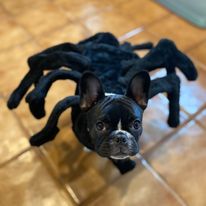 Petal Wilson ready to terrorize the neighborhood Petal Wilson ready to terrorize the neighborhood Do you feel that? The nights are growing longer, the air is growing colder, and there’s something sinister lurking around every corner. While we all know Halloween candy can pose a threat to our pets and trick-or-treaters can give them a fright, this year we’re talking about a lesser-known danger that’s just as sinister. It’s a danger that lurks in plain sight, a danger that few of us ever think about, a danger that’s coming from inside the house. This year we’re talking about… Decorations. We all enjoy turning our homes into dens of dastardly horror this time of year, but we rarely think of the plastic skeleton in the corner as an actual threat. Our fuzzy friends, on the other hand, might not recognize the difference between play danger and real danger- and as it turns out, that difference might be smaller than you think! This month we’re talking about Halloween decorations, and sharing our top tips to haunt your house without having to haunt the vet’s office. So steel your nerves, find a safe place to hunker down, and read on… If you dare.  Pupmkin's without candles are Jules-approved decorations Pupmkin's without candles are Jules-approved decorations
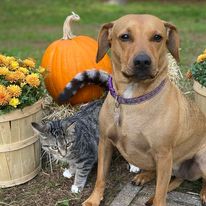 Harper & Kitten pose for a purr-fectly safe fall picture Harper & Kitten pose for a purr-fectly safe fall picture If this were a horror movie you’d have to face these dangers alone, or perhaps with a group of ill-fated friends, but fortunately it’s (probably) not. We want you all to have a Halloween that’s fun and spooky while still remaining safe, and we’re here to answer any questions you might have. If you’ve got concerns, whether they’re about decorations or general Halloween safety, feel free to get in touch! Less than half of our staff have been possessed by malevolent spirits, so our advice is usually trustworthy. Travel! Remember that? It’s been a minute since most of us have been jet setting off to other countries. But as things settle down and borders open up, a lot of us have been bit by that travel bug. International travel is already a complicated beast and it only gets harder if you’re planning to bring your pets with you. Every country has different requirements and it can quickly turn into a maze of paperwork and appointments and restrictions. But fear not! Concord Animal Hospital has two USDA accredited veterinarians who are here to help with your international travel needs. Today we’re sitting down with Dr. Katherine Aubert, to cover her top tips for international travel. Start planning early! Like, really early. The sooner the better. Every country has its own requirements for international travel, and between processing times, required tests and vaccinations, and waiting periods, we’ll want as much lead time as possible. Dr. Aubert recommends giving a call as soon as you start making travel plans so that we’ll have a head start on sorting through requirements and preparing necessary documents. You should also let us know as soon as you have flights booked, since many countries require certain things to be done within a very short window before your arrival. “For example,” Dr. Aubert says, “most countries require an exam by a USDA accredited veterinarian within ten days of your arrival. If you start making plans last minute, it can be hard to find the time to make these appointments happen.” Keep your records organized! If you’re preparing for a relaxing vacation then paperwork is probably the last thing you want to worry about, but a little organization now will save you a lot of hassle later! Different countries have different forms that need to be filled out and different records that need to be provided, but one of the most common is a rabies certificate. For many countries you will need an original copy of your pet’s rabies certificate, including their microchip number, signed by the administering veterinarian in blue ink. Some countries may require additional vaccinations, parasite treatment, or other treatments or procedures. So basically, the more documentation you can come with, the better! 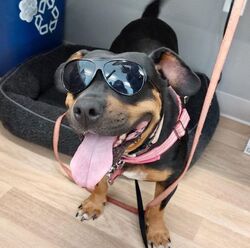 Going somewhere sunny Endy? Going somewhere sunny Endy? Double-check that microchip! Many countries require that your pet have an ISO compliant microchip for identification abroad. Not all microchips meet ISO standards; the ones we use at Concord Animal Hospital do, so if your pet was microchipped here you’ll be all set! If your pet was microchipped at another clinic you should check with them to see if the microchip is ISO compliant. If it is not compliant, we’ll typically want to administer a new microchip that is. Leave time for titers! Some countries (such as most European Union members and many Caribbean islands) will require a rabies titer prior to arrival. A titer is a special test that checks the antibody levels present in your pet’s blood to ensure they’re truly protected against a given disease. And while that sounds pretty straight forward, there is a catch; “Rabies titers have to be sent out to special reference laboratories, and typically take 4-6 weeks to process,” Dr. Aubert cautions. So to reiterate point one, start planning early! The last thing you want is for your entire trip to be ruined because a lab didn’t come back in time.  Certify your health! Most countries will require an International Health Certificate, signed by a USDA accredited veterinarian (like Dr. Aubert or Dr. Hardie!), after an exam conducted no more than ten days prior to your arrival in your destination country. “Some countries have longer exam periods or don’t require a certificate at all,” Dr. Aubert says, “but these are the exceptions rather than the rule. After your exam we’ll submit the necessary paperwork to the USDA offices in New York. The approval process can take several days, and then the USDA will overnight you a hard copy of your endorsed certificate, which you’ll need to bring with you while traveling.” So, at the risk of sounding like a broken record, call us early! The sooner you start making plans and getting appointments set up, the more likely we’ll be to get everything arranged in time. Consider giving your pet a vacation of their own! While we all want our pets to join us in our beautiful vacation destinations, travel can be stressful for the little ones. Unfamiliar surroundings, hectic airports, and long flights in cooped up carriers can quickly leave your pet needing a vacation from their vacation. “If you’re only going to be abroad for a week or two,” Dr. Aubert says, “consider leaving your pet with a sitter, a family friend, or a boarding facility. They might be happier for it.” Give us a call! Every country is different! That’s a beautiful sentiment about the diversity of our big wide world, but it’s also a factual statement about international travel requirements. To check the requirements for your destination you can visit the USDA’s Pet Travel Website, which offers a country by country breakdown of precisely what you’ll need. But of course, we’re always happy to help as well! If there’s one thing we hope you’ll take away from this article it’s, you guessed it, call us early! The sooner we can start planning, the more we'll be able to ensure your vacation goes off with less hitches and more scritches.  Not that bad, actually. But we’re getting there and we're here to help you prep your pet! The air’s turning cold, the days are growing shorter, and winter is on the horizon. But as much as we all love sledding, snowball fights, and warm mugs of hot chocolate, winter also brings with it some unique petcare challenges that aren’t present during the warmer months. Keep your winter more delightful than frightful by following these quick tips for winter weather safety! Frosty Fleas (and Ticks, and Heartworm): If there’s one upside to winter temperatures it’s that all those nasty warm-weather parasites have died off, right? Wrong! Ticks can be active in temperatures as low as 40 degrees, while fleas can get all the way down to 33 degrees. And while New England winters are colder than this on average, it’s not uncommon to end up with a few unseasonably warm days in the middle of the coldest months. If you’re thinking “Wow, what beautiful weather!”, then unfortunately so are those pesky parasites. That’s why we strongly recommend continuing flea, tick, and heartworm prevention year-round, no matter how cold it is. Wipe those paws: The same salts that prevent us from slipping on icy sidewalks and injuring (or embarrassing) ourselves can be rough on a dog’s paws. Wiping your dog’s paws down after a walk can prevent irritation to their paw pads, and will also keep them from licking off residue that can be harmful or toxic. Depending on how sensitive your dog’s paws tend to be, you can also consider using booties or paw balm to help protect them during your winter outings. There’s one piece of advice we always give (and this one’s good year-round): to give us a call whenever you’re unsure! If you’ve got winter-weather questions, think somethings not right with your pet, or want to schedule a visit or stock up on essentials, give us a call!  Mind your mercury: You know, like they used to put in thermometers? Just like humans, dogs and cats can be sensitive to the cold, and can suffer from frostbite or hypothermia. Limit their outdoor time once temperatures hit freezing, and consider putting a sweater on puppies or dogs with short coats. Don’t leave them alone in your car either; a freezing car can be just as dangerous as a hot one! Get ready to get snowed in: There’s a big difference between “Snow day” and “Snow week.” Hope for the best but plan for the worst by making an emergency kit ahead of time, so you’ll be prepared in the case of an extended power outage or a prolonged snow-in. We recommend keeping at least three days of your pets’ food, water, and medication, as well as some special toys and treats to help keep them relaxed while they’re cooped up. And be sure to check out mass.gov’s Winter Storm Safety Tips for general advice about keeping your home and human family members safe as well! 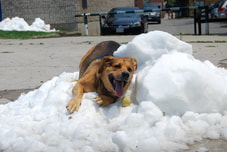 Check your car: The inside of your car’s hood might not sound like a cozy resting place to you, but to your cat a warm, enclosed space like that is prime napping real-estate. Before starting your car make sure any cats in your house are accounted for, and check your hood or make some noise to flush out any feline stowaways. Chip ice and chip pets: If you’ve sniffed one snowflake, you’ve sniffed them all. A thick blanket of freshly-fallen snow looks beautiful to us, but it can also cover up familiar scents and make it harder for a wandering pet to find their way back home. Prevent your dogs from getting lost by keeping them on a leash during winter walks, and increase your odds of reuniting with a lost dog or cat by microchipping them and giving them a well-fitting collar with up to date contact information. For some additional winter petcare advice, check out our previous blog on the same topic. Now bundle up, light a fire, and let’s make this winter a great one!  It’s getting to be that time of year again! There’s a chill in the air, decorations are popping up on your neighbor’s lawns, and your kids are probably deep in contemplation over which superhero, princess, or scary monster they want to be this year. In just a few short weeks your house will become a treasure trove of seasonal snacks and sweets. But while your kids will enjoy digging into their sugary hauls (and you might enjoy sneaking a few pieces for yourself, we won’t tell), Halloween candy can actually prove very scary for your pets! We’ve all heard that chocolate is bad for dogs, but there are plenty of other lesser-known pet toxins that have slapped on a costume and snuck their way into your home. To help keep your pets safe this Halloween season, here’s a list of a few of the biggest dangers to watch out for! 
Uh-oh, my pet got into something! An ounce of prevention is worth a pound of cure, but we know it’s not always that simple. If your pet got into something they shouldn’t have, call us or an emergency service immediately. Depending on what your pet ate, how much, and how long ago, we may recommend monitoring for symptoms, inducing vomiting, or coming in for supportive care. 
So what can I feed my pet? We get it. While it’s important to keep your pet safe, you don’t want them to feel left out on a night like Halloween! If you want your dog to be able to join you in your post-Trick-or-Treat feast you can offer them a few high-value treats. You can make a game out of it with your cat or dog with an interactive food puzzle!
Halloween should be a fun night, and the last place you want to spend it is an emergency room. If you’re looking for more ways to keep your pets safe check out last year’s Halloween blog post for a few general tips on keeping your night fun-scary, instead of actual-scary. And with all that said stay safe, and Happy Halloween! 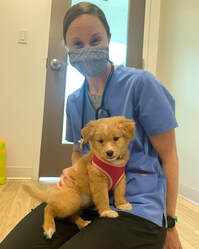 Hurricane season in New England lasts from June to the end of November, but emergencies also come in less predictable forms throughout the year, such as house fires and tornadoes. When disaster strikes, your pets are almost completely dependent on you to survive. Follow Concord Animal Hospital's 5-point emergency checklist to keep your pets safe during an emergency. 
You've all heard the jokes: COVID-19 keeping pet owners home-bound is a dog's dream come true, a cat's worst nightmare. While our canine and feline friends may disagree on whether having us home all day is a good thing, a quieter Halloween may be a silver lining of this pandemic that they can both enjoy!
If you do plan to answer the door with your dog, keep your pooch on a leash. This will prevent a nervous dog from becoming aggressive with a trick-or-treater or unexpectedly bolting out the door. If your pet does escape from the house, slip a leash, or somehow become lost, having an ID tag worn on their collar and a microchip dramatically increases the odds that you’ll be reunited with your pet. Make sure your pet’s ID tag has up-to-date contact information and that your microchip manufacturer has your current address and phone number. Though the terrifying “ding dong” of Halloween might be missing for most pets this year, there are a few other dangers pet owners need to be aware of. Here are Concord Animal Hospital’s top three safety tips to keep your pet healthy & happy this Halloween.
PET EAT SOMETHING QUESTIONABLE? Call us at 978-369-3503 immediately to determine if your pet needs medical attention. If this happens when we are closed, visit our Emergency Services & Resources page for a list of 24-hour hospitals or the Poison Control Center.
Need to pick up your heartworm or flea & tick preventatives? Stop by to pick up at CAH or try ordering from our online store! These pests are tougher than you think!
KNOW WHEN TO ASK FOR HELP - WHEN IN DOUBT JUST GIVE US A CALL! Call us at 978-369-3503 or email at [email protected] if you have any questions or concerns about your pet's health - we're always happy to help!
All of us at CAH wish you and your family, including the furry ones, a very safe and happy holiday! Thanksgiving is a time for indulgence and overeating for many of us, but don't let the excess extend to your four-legged family members. It’s for their own safety!
Want to give your pet a special treat during the holidays? Instead of sharing your meal, the Animal Rescue League of Boston recommends traditional treats that are safe for dogs and cats or something special like a food puzzle or an interactive toy like a peanut butter filled Kong. Dr. Stephen Wilson of Concord Animal Hospital notes that “in moderation, a small piece of lean turkey meat or some chopped carrots are reasonably safe treats for those doe-eyed dogs.” If you have any concerns about something your pet has eaten, call us at 978-369-3505. If our office is closed, call the Pet Poison Hotline at 855-764-7661 or ASPCA Animal Poison Control Center at 888-426-4435. A fee may apply for calling these or other poison control hotlines. We wish you and your family (including the pets!) a safe & happy Thanksgiving!With a rainy spring behind us, we’re pumped for warm weather! At Concord Animal Hospital, we know that means it’s time to prepare our clients with pet health and safety advice apropos to the coming hazy, hot, and humid season. What Is the Biggest Warm Weather Danger for Pets? As the thermometer starts to climb, the biggest danger posed by the warm weather for pets is hyperthermia, or heat stroke. Activities you might normally do at other times of year--an exuberant session at the dog park with an active pup, taking a longer walk than usual with an older or overweight pet, or leaving your four-legged friend in your car while you do a few quick errands--can put them at serious risk for heat stroke.
What Are the Risks of Heat Stroke for Your Pet? Damage from heat stroke can range from impacted eyes or GI tract, to brain damage and death. Dogs considered at higher risk for heat stroke include:
Time is of the essence and mortality rates in dogs with heat stroke are a lot lower when their owners cool them before they arrive at the hospital." How Can You Help a Pet with Heat Stroke? With the risk of heat stroke especially in dogs on the rise, Concord Animal Hospital’s Katherine Wilson sat down with Dr. Caleb Murphy, Emergency Clinician at BluePearl Specialty Hospital in Waltham to get his suggestions for first aid steps you can take to save your dog’s life. BluePearl is a 24-hour emergency veterinary hospital and one of the emergency hospitals we suggest to our patients for urgent medical assistance when our office is closed. Katherine: Can you describe what happens to a pet suffering from heat stroke? Dr. Murphy: Heat stroke, also called hyperthermia, is a failure to regulate the body’s temperature. A pet suffering from heat stroke is having an inflammatory response which leads to multi-organ dysfunction. This overheating can be a result of the pet’s own activity or metabolism or heat gained from the environment, such as on a hot day or in a warm car. Katherine: How does hyperthermia effect a dog? Dr. Murphy: Dogs lose 70% of their body heat through the skin. But when the air temperature is higher than their body temperature, dogs also lose heat through evaporation from their respiratory tract via panting. If they are suffering from hyperthermia, your dog will begin panting excessively to maximize heat loss. Internally, blood will increasingly circulate to the skin at the cost of blood flow to the internal organs, which has the potential to cause long term damage.
Katherine: What can a dog owner do if they think their dog is suffering from hyperthermia? Dr. Murphy: A lot! Time is of the essence and mortality rates in dogs with heat stroke are a lot lower when their owners cool them before they arrive at the hospital. In one study, mortality rates were 50% in dogs in the total sample, but 100% of dogs that were cooled by their owners before being admitted to the hospital and brought in to a hospital within 90 minutes of exposure survived.* If you think your dog is suffering from heat stroke, you need to get to your veterinarian immediately. Before you go, wet the dog with cold water with a hose or in a bath or sink. I advise against putting wet towels on the dog, because the towels will quickly become warm and prevent the transfer of heat away from the dog’s body. If you have ice packs, place them in your dog’s armpits and around the belly after placing your dog in the car. Turn the air conditioner on high or roll down the windows and call the vet to let them know you’re coming in while you are on the way. Stay Safe in the Heat When the sun is shining, we all want to enjoy the warm weather with our pets! By making seasonal adjustments to our activities, we can help prevent overheating and heat stroke in our pets. Doing things such as always bringing a water bottle and putting out fresh water for your pet, avoiding walks during the hottest times of day, and leaving your pet at home and not in your car when you go out to shop will go a long way to keeping your pet safe. And if your dog exhibits any of the symptoms of heat stroke noted above:
Special thanks to Dr. Murphy and BluePearl for contributing to our efforts to keep our patients happy and healthy!
*Heat Stroke in Dogs, The Hebrew University of Jerusalem, Israel. Journal of Internal Veterinary Medicine. 2006.
What Kind of Ticks Are in Our Area? There are three main types of ticks in the Concord, Massachusetts area:
How Can I Keep My Dog Safe from Tick-Borne Diseases? Our veterinarians at Concord Animal Hospital strongly recommend using tick preventatives such as Bravecto or Simparica. Some clients double-up with a chewable preventative and a repellent collar. Talk to one of our veterinarians to determine the best product for your pet given their health history, potential exposure to ticks and lifestyle. Use your preventative all year long! Please use a tick preventative year-round! Frost and freezing temps DO NOT kill ticks. Ticks are dormant but come back to life in only 40 degrees - a high often achieved even in the coldest months. Our veterinarians see plenty of dogs with tick-borne illnesses throughout the winter. Our vets also suggest taking added precautions such keeping your dogs out of long grass or and away from undergrowth. These areas are where dogs like to sniff and explore, but they are also prime hangouts for ticks. After a walk, the American Kennel Association recommends checking some spot you might forget to look, such as inside ears and between toes, just to make sure your pet didn’t bring any ticks home with them. Keep a running list of questions on ticks and any other concerns to ask during your next vet visit! What Do I Do If I Find a Tick on My Dog?
If you find a tick on your dog, remove it as soon as possible! If it hasn’t attached itself yet, there is no risk of tick-borne illness for your pet. If it has attached, grasp the tick with a pair of tweezers as close to the site of attachment as you can and pull straight back. If you have found an attached tick, particularly one that is engorged, the MSPCA advises noting the date and time to discuss with your veterinarian. Continue watching for the following symptoms*:
Concord Animal Hospital's 5 Tips to Keep Your Pet Healthy This Winter
|
|
OFFICE HOURS:
Monday-Friday: 8:00 am to 6:00 pm Saturday: 8:00 am to 12:00 pm |
CONTACT INFORMATION:
Concord Animal Hospital 245 Baker Avenue Concord, MA 01742 Phone: (978) 369-3503 Fax: (978) 371-9748 [email protected] |
JOIN OUR PACK!
Sign up for our monthly newsletter, the Paw Press for hospital news, pet care tips and cute pet photos! |
Copyright © 2022

